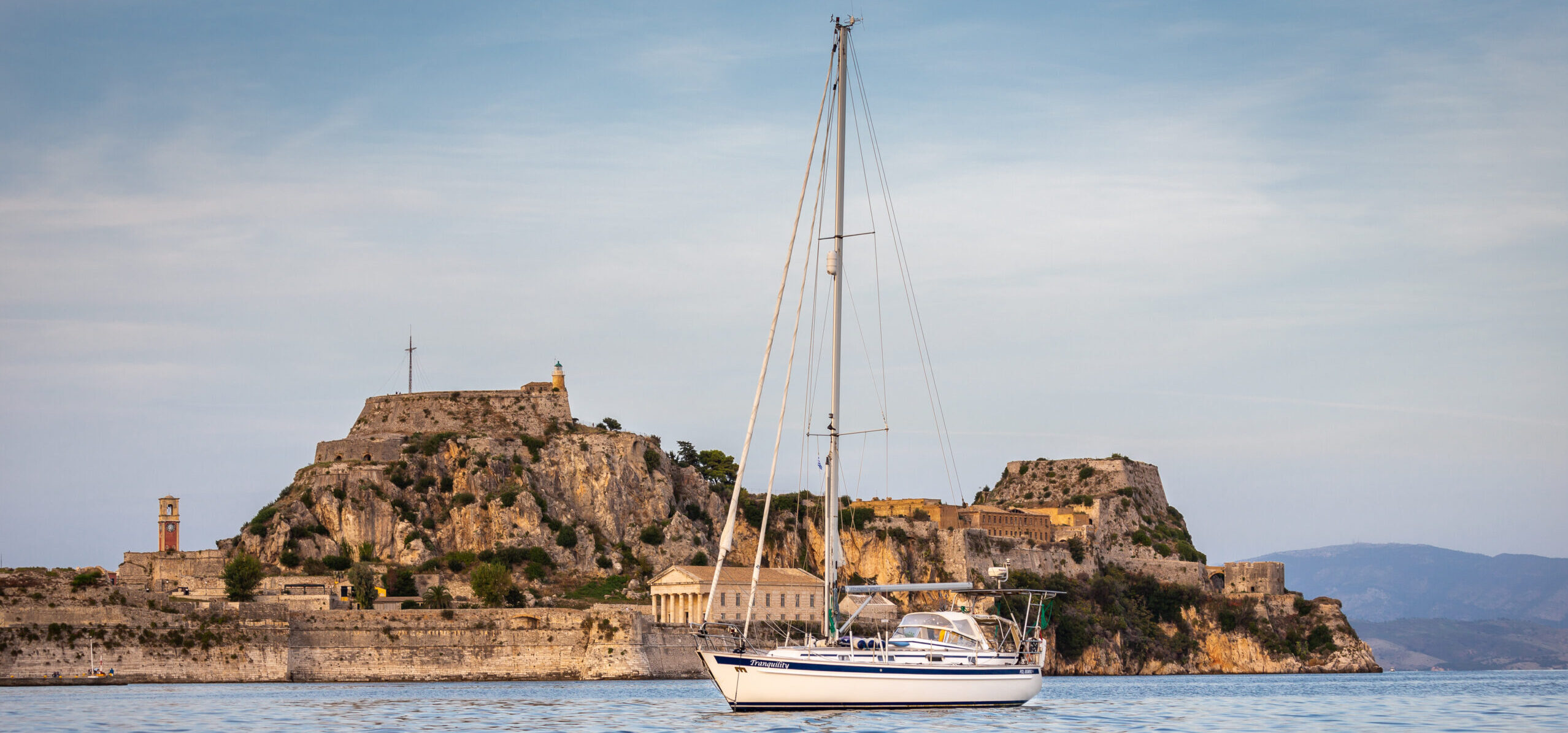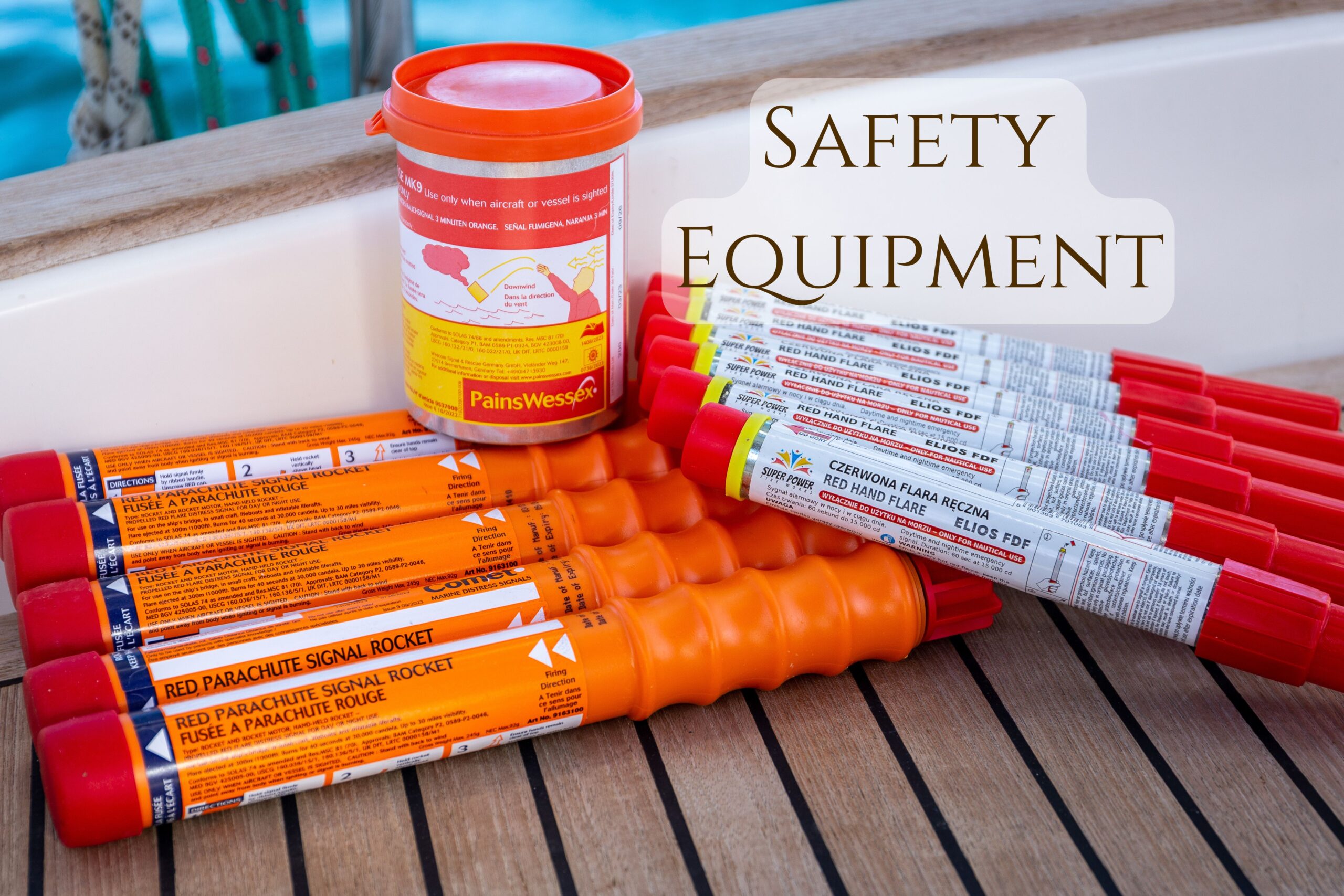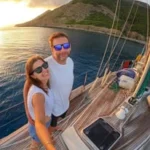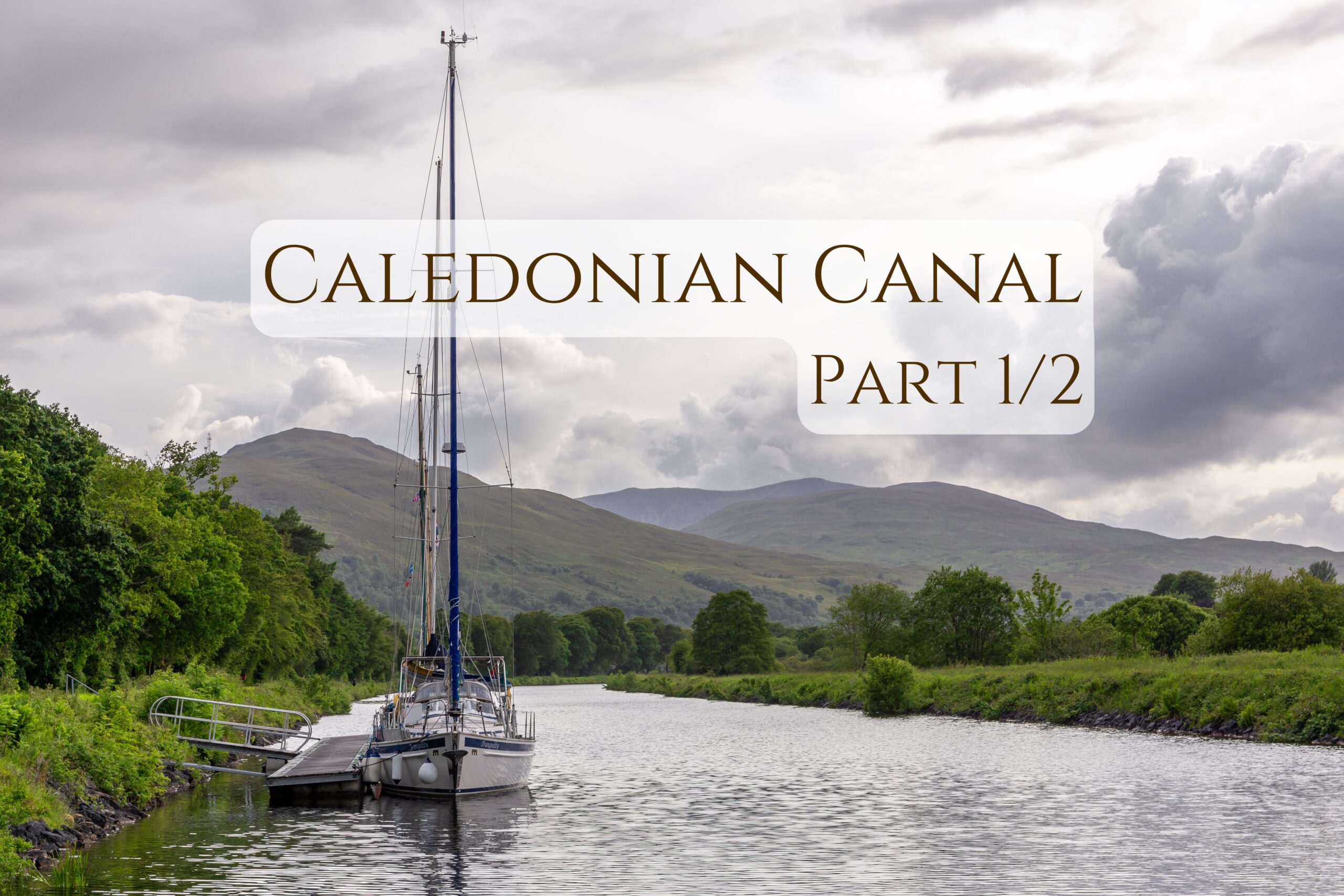This week we will describe our yacht safety equipment. You will learn what we decided to use when sailing from Gdańsk on our voyage around Europe, how our equipment works and why we chose certain solutions.
I hope that the information contained in this post will be useful for sailors equipping their yachts and preparing for their cruises. I also think that the article will be an interesting dose of knowledge for those of you who do not sail. You will learn how to take care of safety at sea!
How to choose Yacht safety equipment?
Sailing area
When creating a list of emergency equipment, you should ask yourself where you will be sailing. You will differently equip a yacht sailing on lakes than the one crossing oceans.
Yacht safety equipment requirements of the Polish flag
The number and type of safety equipment is often imposed by the country of registration of the yacht. In the case of a boat under the Polish flag below 15 m and in private use, such requirements are not specified.
The exceptions are yachts that have voluntarily submitted to a technical inspection and have a so-called Safety Card issued.
The emergency equipment of larger yachts (15-24 m and larger) is specified in the Regulation of the Minister of Transport, Construction and Maritime Economy of 28 February 2012 on the safe navigation of sea yachts.
It contains information on, among other things, the required standard of a life raft, the number of required lifebuoys, life jackets, harnesses or signaling devices. Since this information does not apply to our yacht and many private vessels up to 15 m, I please refer to the Regulation for details.
Yacht safety equipment vs local regulations
On top of all this, there are national regulations of the waters on which we intend to sail. Of course, it requires a lot of work to check each country one by one, especially on a long journey. Nevertheless, it is worth it, because, as we have already described, inspections do happen.
How did we Decide on Our Yacht Safety equipment?
When choosing the yacht safety equipment for our Malo 39, we took into account that we would spend the first 2-3 years in Europe. Sailing a maximum of 2-3 days to the nearest land, in an area with good communication, where the rescue services are efficient and effective, we do not have to be ready for the apocalypse.
Things will be different when we plan to cross the Atlantic or the Pacific. Then the list of yacht safety equipment will be modified accordingly.
The lack of rush to buy more emergency equipment in advance also results from the fact that they may expire.
To sum up, from this article you will learn what our emergency equipment looks like when sailing around Europe, on a private yacht under 15 m under the Polish flag.
Pyrotechnic signaling devices
Handheld flares
Handheld flares, which after firing by pulling a string are held in the hand. Flares give off an intense, red light and smoke for 60 seconds. They are good for calling for help when another vessel is in sight.
When ordering flares, I was very surprised that they are sold under the name “stadium flares” and advertised as “the most popular among football fans in Europe”. Is this still legal?
For now, we have 6 handheld flares.
Parachute rockets
They look similar to flares, they are slightly larger. According to the specification, after firing, they shoot to a height of 350 meters, burning with an intense red light for 40 seconds. Then they slowly fall on a small parachute – hence their name. They are good for signaling your position to vessels/services that are out of sight. The rocket is visible from a distance of 30 nautical miles.
After buying a yacht in Sweden, there were several parachute rockets and handheld flares on board. However, they were out of date… by 17 years! So we decided to test them. Firstly, for training purposes – if we need to use them in an emergency, we will already know what to expect. Secondly, to satisfy our curiosity about whether such old equipment will work. We did it in very controlled conditions so that no one gets hurt and so that we do not accidentally call the emergency services. As for the flares, one of the two went off correctly. The parachute flare went off, flew to about 100 m height and glowed as intended. However, I was surprised at how much it jerked my hand when it went off. Do not try this at home!
We have 5 parachute rockets on board.
Smoke signal
The smoke signal is a small can that generates thick orange smoke for about 3 minutes when activated. In addition to marking position, it is used to indicate wind direction during an air rescue.
We have 1 smoke signal on board.
Personal safety equipment
I have already briefly mentioned our personal equipment in Module 6, where I described passing the Bay of Biscay – I invite you to read it here.
Now I will expand on this topic.
Life jackets
On board our yacht we have pneumatic life jackets from the leading company Spinlock. These are some of the best life jackets in the world. I have a life jacket from the Vito line, Tomek from the Deckvest line. The difference is due solely to individual preferences regarding comfort and fit. Both jackets are very comfortable and do not restrict movement.
As for the technical differences, the Vito jackets are activated by water pressure, while the Deckvest jackets are activated by contact with water.
We also have Spinlock Deckvest life jackets for our guests.
Additionally, we have harnesses with which we attach ourselves to the boat when leaving the cockpit in difficult conditions.
A lifeline runs along the entire length of the boat on both sides. It is a strong belt to which we attach our harness when walking (or crawling).
MOB1 emergency beacon
We have RescueMe MOB1 (MOB – Man OverBoard) radio beacons installed in the life jackets. They are activated automatically when the life jacket is inflated. They send the GPS position to all nearby vessels with an AIS receiver. Additionally, they also activate the DSC radio alarm. The latter is particularly important to us, because it will effectively wake up the other person when one falls overboard during a night watch.
For many reasons, we believe that this is a better solution for us than PLB – Personal Locator Beacon.
Edit: RescueMe recently released new versions of MOB – MOB2 and MOB3. MOB3 combines functions of PLB and MOB1 in one device, which is definitely the best solution.
EPIRB
Speaking of radio beacons, the yacht is of course equipped with an EPIRB (Emergency position-indicating radio beacon). This is a transmitter that, after activation (automatic after submerging or manual after pressing a button), will send our alarm signal to the Rescue Services Coordination Center. Additionally, we decided on a model that will also send the position to the AIS receivers of nearby vessels.
In Poland, the Civil Aviation Authority is responsible for coordinating signals from EPIRB. Such a device must also be registered there.
If it is necessary to leave the yacht, we take the EPIRB with us.
And if our friends from aviation industry are reading this, then an EPIRB is exactly what an ELT is in an airplane 🙂
Life raft
If we find ourselves in a situation where we have to leave the yacht, we have a life raft for this occasion. We decided on a model that, in the event of opening upside down (a common thing with life rafts), automatically returns to the upright position.
The life raft is equipped with the so-called ISO II standard pack. These are things that will make it easier for us to survive at sea, like signaling devices, food rations, water, a first aid kit and a life raft repair kit.
All this is in a handy suitcase, which is attached to the pushpit. We are not fans of installing life rafts on board, due to the difficult access to them, especially when it will be needed most – in rough seas, in difficult conditions.
Grab Bags
In addition to the useful things that the raft is equipped with, we have prepared so-called Grab Bags in the event of leaving the yacht. They are also equipped with a number of things that will allow us to survive at sea. These include signaling devices, water, food, medicines, first aid, etc. But their contents will be discussed in a separate article.
It should be remembered that in an emergency, in addition to the life raft, most yachts have a dinghy on board, which can also be used when it is necessary to leave the main vessel.
Communication
The essential safety equipment for every yacht are communication means.
VHF radio
Like the vast majority of yachts, we have a VHF radio station on board. On a daily basis, it is used for routine communication, but in an emergency it will be the first means we use to call for help.
Garmin Satellite communicator
In addition to the radio station, we have a Garmin inReach Mini satellite communicator. With its help, we can not only send an SOS signal, but also establish text communication with any mobile number.
The undoubted advantage of this device is the possibility of exchanging information. The EPIRB radio beacon, which I wrote about earlier, can only send a distress signal, without information about the type of danger and help we expect. There is no possibility of providing us with feedback on whether the signal has been received and whether help will arrive.
Hence the advantage of a satellite communicator, with which we can freely exchange text messages with any number.
Mobile phones
I must of course mention the simplest and most accessible means of communication on board – our mobile phones. They usually have a reception up to 15-20 miles from the coast, so I believe that in many cases they can successfully be used to call for help.
The list of our means of communication will be extended before we cross the Atlantic. A satellite phone and/or the increasingly popular Starlink will appear on board. These means of communication, in addition to emergency use, will be necessary to update the weather forecast during long voyages. In our opinion, they are not necessary when sailing around Europe and having the previously mentioned devices.
Starlink
In our third year of cruising—and with plans to sail further north in Europe, where cell coverage can be spotty—we decided to invest in Starlink. It’s been a game changer, making life onboard significantly more comfortable and connected.
If you’re thinking about getting Starlink yourself—whether for home, your sailboat, RV, or just for traveling—you can use our referral link. For you, nothing changes, and for us it means one month a bit cheaper. Thanks for your support!
Lifebuoy and a Throwing Line
When describing emergency equipment, I did not mention the lifebuoy and a throwing line, but I assume that this is obvious and I will not spend time on it.
Yacht Safety equipment – summary
To sum up, this is how the safety equipment of our yacht looks when sailing around Europe. As I mentioned earlier – this list will evolve depending on the sailing area we will be in, our plans, etc.
As we often laugh, this is the most expensive equipment on our yacht, which we hope to never use 🙂
If you have any questions about emergency equipment or need advice on what equipment to choose for your yacht and sailing plans – feel free to write.













2 Responses
Many thanks!
[…] det allra nödvändigaste: vatten, mat, extra nödbloss, en handhållen VHF och första hjälpen. Tranquility Mare ger tips på hur man packar en […]